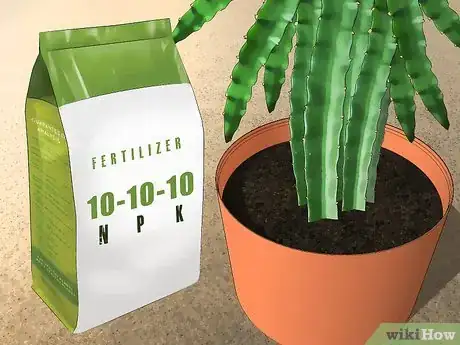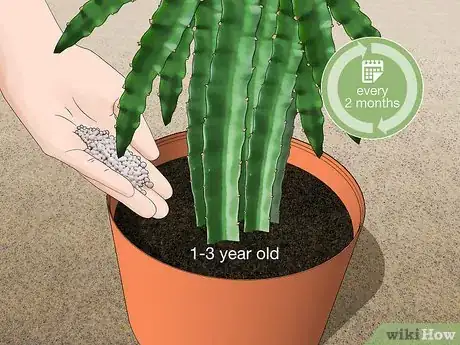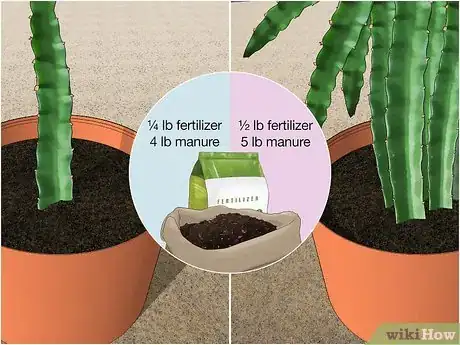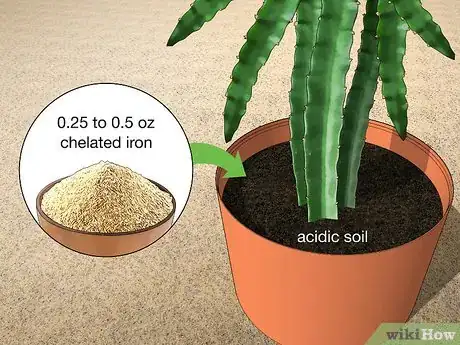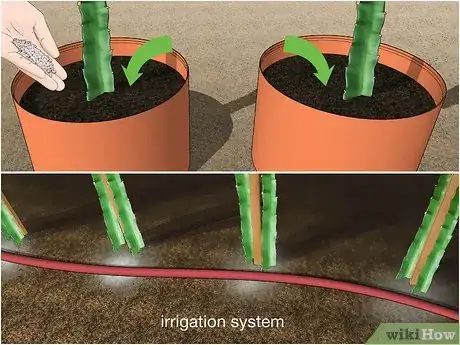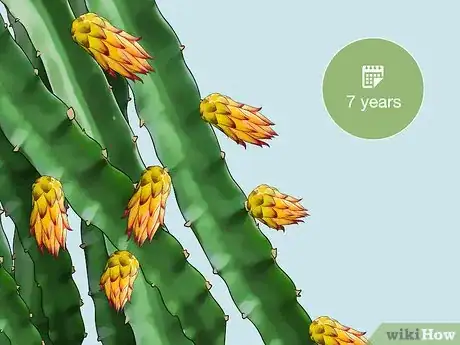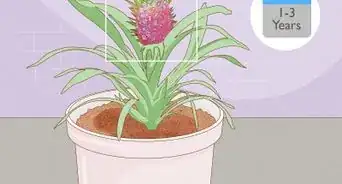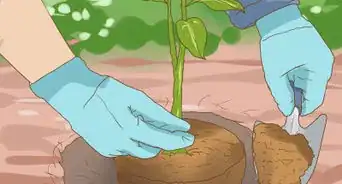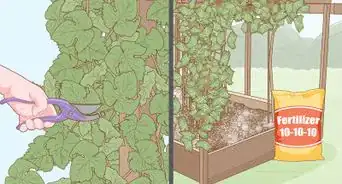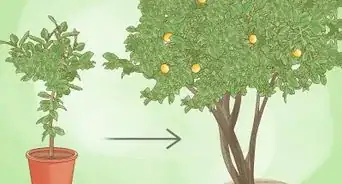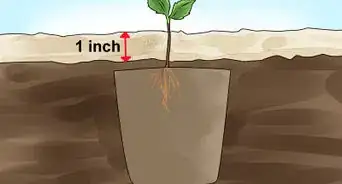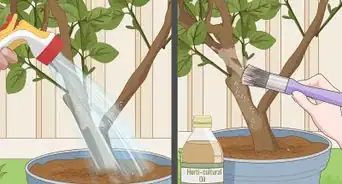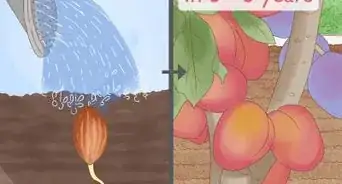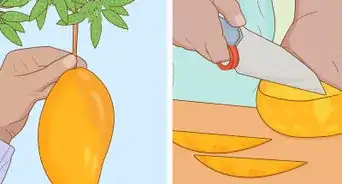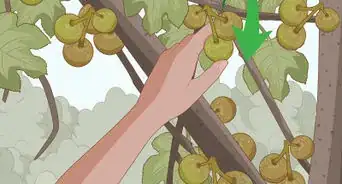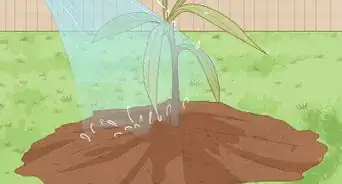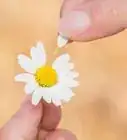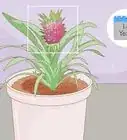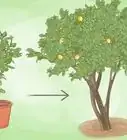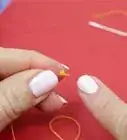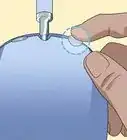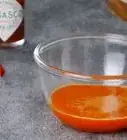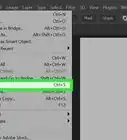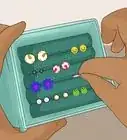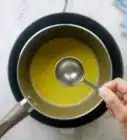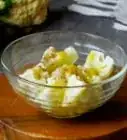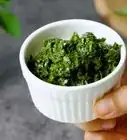This article was co-authored by Ed Kuoha and by wikiHow staff writer, Janice Tieperman. Ed Kuoha is a Chef and the Owner of Kuoha Culinary based in Aiea, Hawaii. He has more than 20 years of experience in various culinary kitchens and settings such as Morimoto Waikiki, where he received hands-on training from Iron Chef Morimoto. Chef Ed specializes in small catering events and private chef requests. He holds an Associate’s degree from The Culinary Institute of the Pacific at Kapiolani Community College.
There are 8 references cited in this article, which can be found at the bottom of the page.
This article has been viewed 32,418 times.
Do you want to grow your own dragon fruit? If you live in a warm, humid area, you might be in luck.[1] These plants aren’t hard to care for, but they do require a specific fertilizer regimen. Not to worry—we’ve answered all your frequently asked questions, so you can grow healthy, delicious dragon fruits from the comfort of your home.
Steps
How often do you fertilize dragon fruit?
-
1Fertilize young, 1-to-3-year old plants once every 2 months. Apply both traditional fertilizer and manure or compost to your plant at the same time. Between March and September, apply the the chelated iron or ferrous sulfate 4-6 times total.[7]
-
2Nourish older plants with traditional fertilizer 3-4 times a year. Scale back the manure or compost, applying it twice a year. Between March and September, continue to fertilize your plants with chelated iron or ferrous sulfate 4-6 times each year.[8]
How much fertilizer do you need?
-
1Use ¼ lb (118 g) of fertilizer and 4 lb (1.2 kg) of manure for a new plant. Dragon fruit plants don’t need that much fertilizer and manure, especially when first starting out. If you’re growing multiple fruit plants, you’ll need ¼ lb (118 g) of fertilizer and 4 lb (1.2 kg) of manure or compost for each one.[9]
-
2Apply extra fertilizer and manure as your plant matures. When your plant is 2-3 years old, add an extra 0.3-0.4 lb (136-182 g) of fertilizer. Similarly, nourish each dragon fruit plant with 6 lb (2.7 kg) of manure or compost during this timeframe.[10] Once your dragon fruit is at least 4 years old, regularly apply ½ to ¾ lb (227-341 g) of fertilizer and 5 lb (2.2 kg) of manure.[11]
What other nutrients can you use in addition to fertilizer?
-
1Some gardeners use chelated iron or ferrous sulfate to adjust the soil’s pH.[12] Dragon fruits thrive in soil that’s slightly less than 7 pH.[13] To help your plant grow as healthy and strong as it can, experts recommend treating acidic soil with ferrous sulfate, and nourishing basic soil with chelated iron.[14]
- Use a small amount of chelated iron or ferrous sulfate on 1-year old plants. Spray 0.25 to 0.5 oz (7-15 g) of chelated iron over any basic soil, or scatter a small handful of ferrous sulfate over acidic soil.[15]
- Apply extra chelated iron to plants that are 2 years or older. As your dragon fruit matures, treat the soil with 0.75-1 oz (22-29 g) of chelated iron, if needed. If your soil is more acidic, continue treating it with a small amount of ferrous sulfate.[16]
-
2
How do you apply the fertilizer?
-
1Apply traditional fertilizer with granules or an irrigation system. If you only have a few plants, you might have an easier time applying the fertilizer around your plants. Depending on your set-up, you might have an easier time applying the fertilizer through your irrigation system.[18]
-
2Spread manure along the base of the plant. If your plant is only a year old, don’t apply the manure around the stem. Once your dragon fruit is at least 2 years old, apply the manure around the base of the stem and plant.[19]
-
3Spray chelated iron and spread ferrous sulfate. Experts recommend spraying around your plant with chelated iron, and spreading ferrous sulfate along the bottom of the plant.[20]
References
- ↑ https://www.bhg.com.au/growing-dragon-fruit
- ↑ https://extension.psu.edu/how-to-calculate-a-fertilizer-ratio
- ↑ https://dpir.nt.gov.au/__data/assets/pdf_file/0004/232933/778.pdf/
- ↑ http://apps.worldagroforestry.org/downloads/Publications/PDFS/BC07324.pdf
- ↑ https://dpir.nt.gov.au/__data/assets/pdf_file/0004/232933/778.pdf
- ↑ https://www.urbanharvest.org/wp-content/uploads/2020/02/Dragon-Fruit-2020.pdf
- ↑ https://edis.ifas.ufl.edu/pdffiles/hs/hs30300.pdf
- ↑ https://edis.ifas.ufl.edu/pdffiles/hs/hs30300.pdf
- ↑ https://edis.ifas.ufl.edu/pdffiles/hs/hs30300.pdf
- ↑ https://edis.ifas.ufl.edu/pdffiles/hs/hs30300.pdf
- ↑ https://edis.ifas.ufl.edu/pdffiles/hs/hs30300.pdf
- ↑ https://edis.ifas.ufl.edu/pdffiles/hs/hs30300.pdf
- ↑ https://www.bhg.com.au/growing-dragon-fruit
- ↑ https://edis.ifas.ufl.edu/pdffiles/hs/hs30300.pdf
- ↑ https://edis.ifas.ufl.edu/pdffiles/hs/hs30300.pdf
- ↑ https://edis.ifas.ufl.edu/pdffiles/hs/hs30300.pdf
- ↑ https://edis.ifas.ufl.edu/pdffiles/hs/hs30300.pdf
- ↑ https://dpir.nt.gov.au/__data/assets/pdf_file/0004/232933/778.pdf
- ↑ https://edis.ifas.ufl.edu/pdffiles/hs/hs30300.pdf
- ↑ https://edis.ifas.ufl.edu/pdffiles/hs/hs30300.pdf
- ↑ https://www.bhg.com.au/growing-dragon-fruit
- ↑ https://unpeeledjournal.com/how-to-cut-what-is-dragon-fruit/
- ↑ https://unpeeledjournal.com/how-to-cut-what-is-dragon-fruit/
